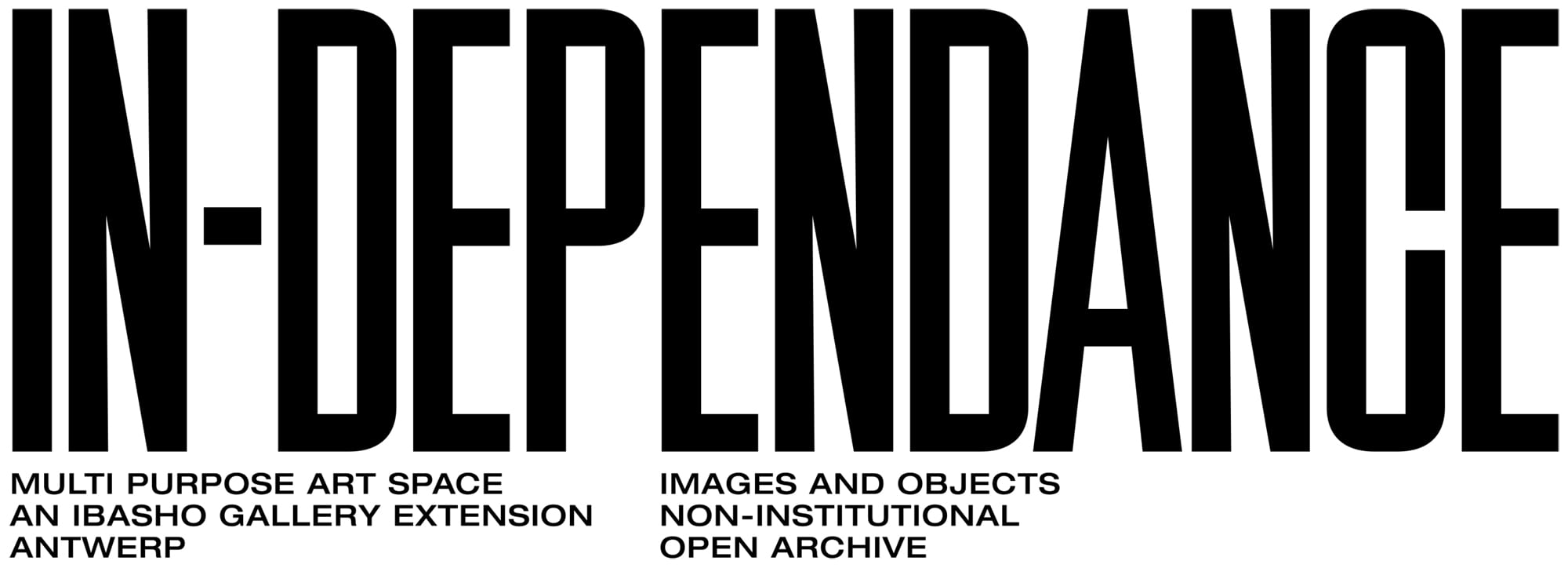GROUP EXHIBITION
THE ALTERNATIVE LANDSCAPE
6 September – 9 November 2025
A fresh perspective on what landscape means to us
IN-DEPENDANCE by IBASHO is proud to present its first group exhibition, centred on the theme ‘The Alternative Landscape’. The show brings together ten international artists who reinterpret the landscape and challenge traditional notions by distorting, fragmenting, visualising and reconstructing it using a wide range of materials and techniques. These works invite us to reconsider what landscape signifies in our complex and ever-changing world.
The participating artists are:
Albarrán Cabrera (SP) is an artistic duo that uses photography as a philosophical investigation into reality. They combine 19th-century analogue processes with inventive materials and a self-developed method. Handmade Japanese gampi paper is paired with gold leaf to create luminous landscapes. In the context of the exhibition, their prints become poetic objects that bridge the real and the imaginary.
Vera van Almen (NL) creates non-existent and ethereal landscapes without a camera, using only light, shadow, and the Van Dyke brown print process. Her images invite viewers to reflect on the unseen and the unknown. Her cameraless practice challenges conventional ideas of control by embracing the unexpected results of chance as an integral part of the artistic process.
Thierry Cohen (FR) reinterprets the landscape in ‘Carbon Catchers’, combining long-exposure forest landscapes with starry skies. The result is powerful imagery that offers a visual commentary on vanishing landscapes and our place in the wider cosmos.
As a preview, Bert Danckaert (BE) presents a work from a major new project to be launched in 2026: ‘El Jardín de los Cerezos’. In this series, he transforms ordinary, often overlooked urban spaces in Havana - such as theatres, churches, and classrooms - into visually rich tableaux. Through framing and geometry, they become abstract landscapes.
Casper Faassen (NL) bridges painting and photography to reshape our perception of landscape. In ‘Gezicht op Antwerpen’ (View of Antwerp), he continues the line he established with ‘Gezicht op Leiden’, inspired by Dutch master Jan van Goyen, known for his cityscapes. Van Goyen’s influence is also evident here in the low horizon and dramatic cloudscapes, so characteristic of the Low Countries. The River Scheldt plays the central role in this tableau, with iconic landmarks such as the Cathedral of Our Lady and the Boerentoren.
Margaret Lansink (NL) created a series of layered sculptures inspired by her journey to the heart of the Morteratsch Glacier in the Swiss Engadin. Witnessing its inevitable retreat due to global warming, she sought to reflect its fragility and layered history. By combining prints on washi paper and transparent sheets with plexiglass, Lansink conveys the glacier’s depth and transformation.
Jaume Llorens (SP) presents ‘GAIA’, a series of paired images reflecting the interdependence of systems on Earth, inspired by the Gaia Hypothesis by James Lovelock and Lynn Margulis, which posits that life on Earth forms a self-regulating system. These visual dialogues generate new meaning and highlight the delicate balance between living and non-living elements.
Works from Sean Lotman (US/JP)’s series ‘Spaceman, Lost Your Way’ reinterpret landscapes as cosmic, dreamlike journeys that combine familiar nature with sci-fi-style desolation. Inspired by the idea of an astronaut crash-landing in a world of lakes, his cinematic, colourful visions evoke ‘2001: A Space Odyssey’ and explore blurred realities shaped by climate crisis and post-apocalyptic mystery.
Aindreas Scholz (DE/IE/UK) focuses on environments shaped by human activity. He experiments with alternative and sustainable photographic processes to emphasise the need for critical reflection on our ecological footprint. In ‘We Are Making a New World', he creates abstract images shaped quite literally by natural elements such as seawater, seaweed, rain, and sunlight. In ‘The Most Beautiful Anthropocene', plants and flowers are even physically embedded in the work.
Marco Tagliafico (IT) presents ‘Arcipelago’, a series of interconnected works derived from a single landscape photograph. A painted glass plate is combined with an analogue print, created using smartphone light in the darkroom. The glass reveals image fragments. With this, Tagliafico seeks to emphasise the impossibility of a singular vision and reflects on how technology filters our perception—contrasting the digital with the physical experience.
Together, the artists in ‘The Alternative Landscape’ challenge conventional views of nature, offering layered visions that are poetic, reflective, critical, and transformative.
The exhibition opens on 6 September and runs until 9 November 2025.











